Northeastern’s magazine goes from digital to print—in a big way
A Brand New Experience
By Catherine O’Neill Grace
S
Seinfeld claims to be a show about nothing. Experience, on the other hand, is a publication about, well, everything.
Imagine being handed a brief like this: Create a publication that reflects the brand and mission of a major university—but don’t worry too much about prominently using that institution’s name or its expert sources. You want to go from online-only to print plus online? No problem. But make the magazine beautiful and luxurious while you’re at it, creating an object that speaks to quality. You say you’d like to print it on heavy stock, use a foil nameplate, and an unusually large trim size? Good idea. Oh, and you’re planning to launch it during the pandemic? Go for it.
This may sound like a fantasy, especially in an era when so many college and university magazines have been going online-only, trimming pages, compromising on paper weight, and limiting mailing lists—but it’s not. It actually happened at Boston’s Northeastern University.
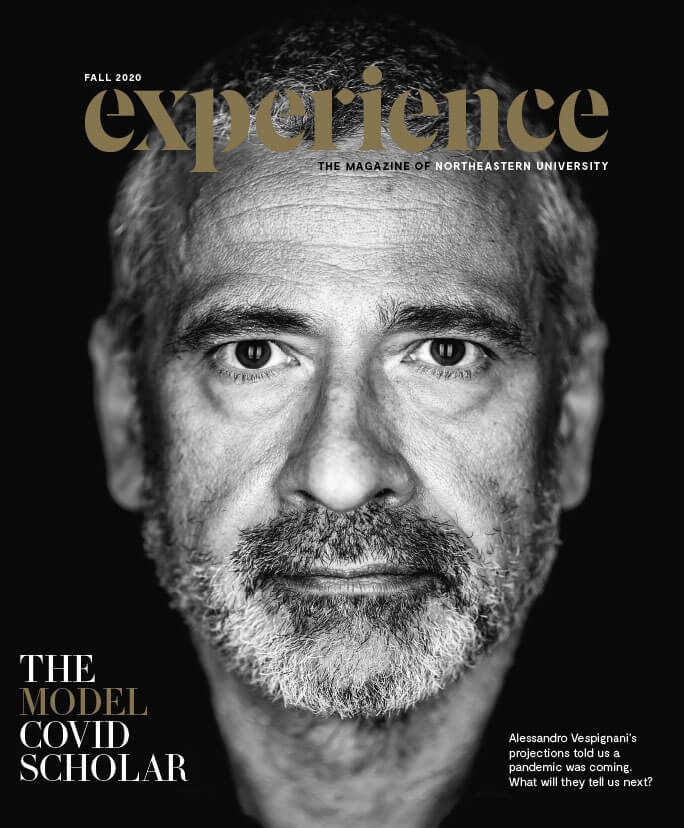
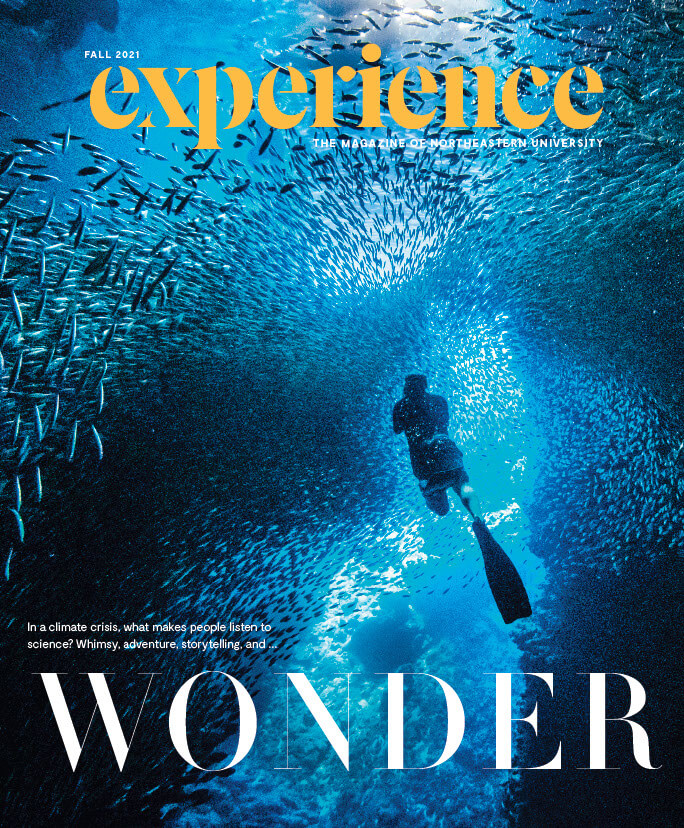
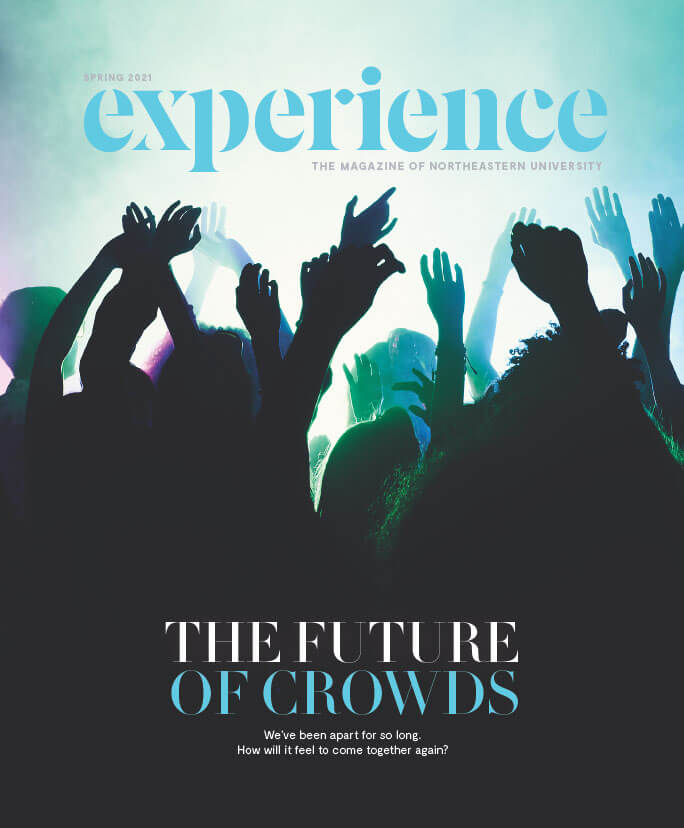
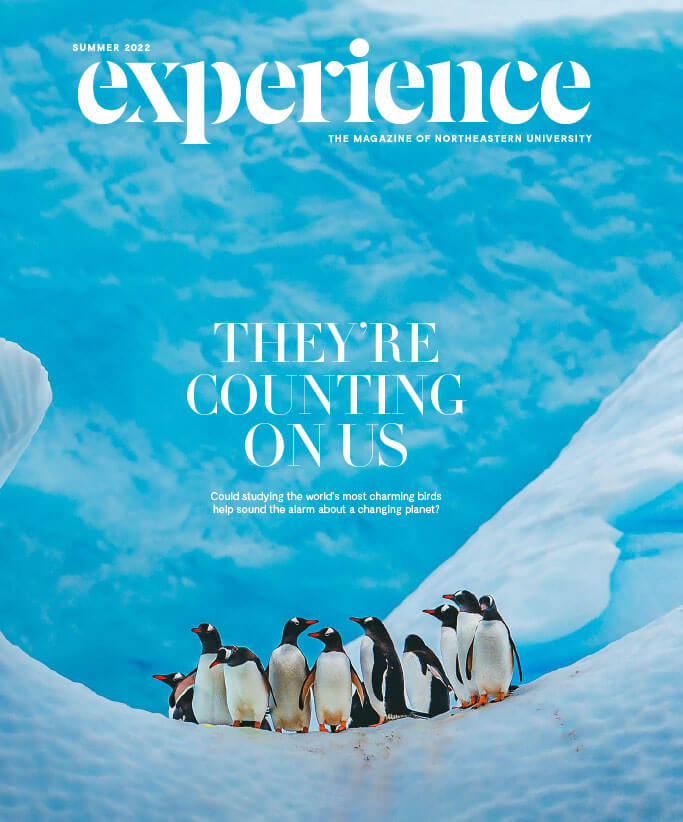
Led by editor in chief Joanna Weiss and design director Michael Workman, Northeastern University’s Experience (expmag.com) launched online in fall 2018; the spectacular print version followed in fall 2020. Weiss and Workman come from long careers at the Boston Globe and other prominent newspapers. Weiss is also a frequent contributor to Politico. Michaela Quigley, editor of partnerships & engagement, worked at Boston Magazine. Deputy editor Erick Trickey also worked at Boston Magazine, as well as Cleveland Magazine, and was a contributor to Smithsonian and Politico. Deputy editor Schuyler Velasco is an alum of the Christian Science Monitor. It’s not surprising that a team like this takes a journalistic, rather than a marketing-driven, approach to content.
The adventure started when Northeastern’s senior vice president of external affairs, Michael Armini, decided to try something new. He already oversaw a highly efficient and successful communications operation, but “what Mike wanted to do was create something that was completely different, that was more of a high-level concept” says Weiss. “The way he described it to me when he was thinking of the concept was, you know, Volvo owns the concept of safety. And experience is the brand, the underpinning of Northeastern and its educational philosophy. So can Northeastern own the brand and the idea of experience?”
At first, the publication was online only and posted stories that were “very, very general,” says Weiss. “We got pitches that were, like, everything under the sun and my trip around the world. But we realized that the philosophy and a lot of the work that Northeastern does is at the intersection of humanity and technology. That has helped us figure out the stories that we’re telling.”
When the pandemic hit in late winter 2020, higher-ed magazine editors around the country saw the writing on the wall: budget cuts ahead. At Middlebury, the decision was made to take the college’s substantial award-winning print magazine online only. Moving online only meant redrawing the boundaries among different kinds of storytelling, refreshing content more often, and scaling back design. Although there has been discussion at the college of going back to print, as of this fall, it hasn’t happened.
But that winter, as the pandemic approached, the Experience team at Northeastern went in the opposite direction—not just preparing to launch a print edition, but doubling-down in terms of design and production values. “We put a lot of thought into the planning process, and Mike really drove it in terms of the paper stock, the size. We still update our online content weekly, and we have a newsletter that goes out to people’s inboxes. But the magazine is different. When it lands in your mailbox, it says you have a special relationship with the institution,” says Weiss.

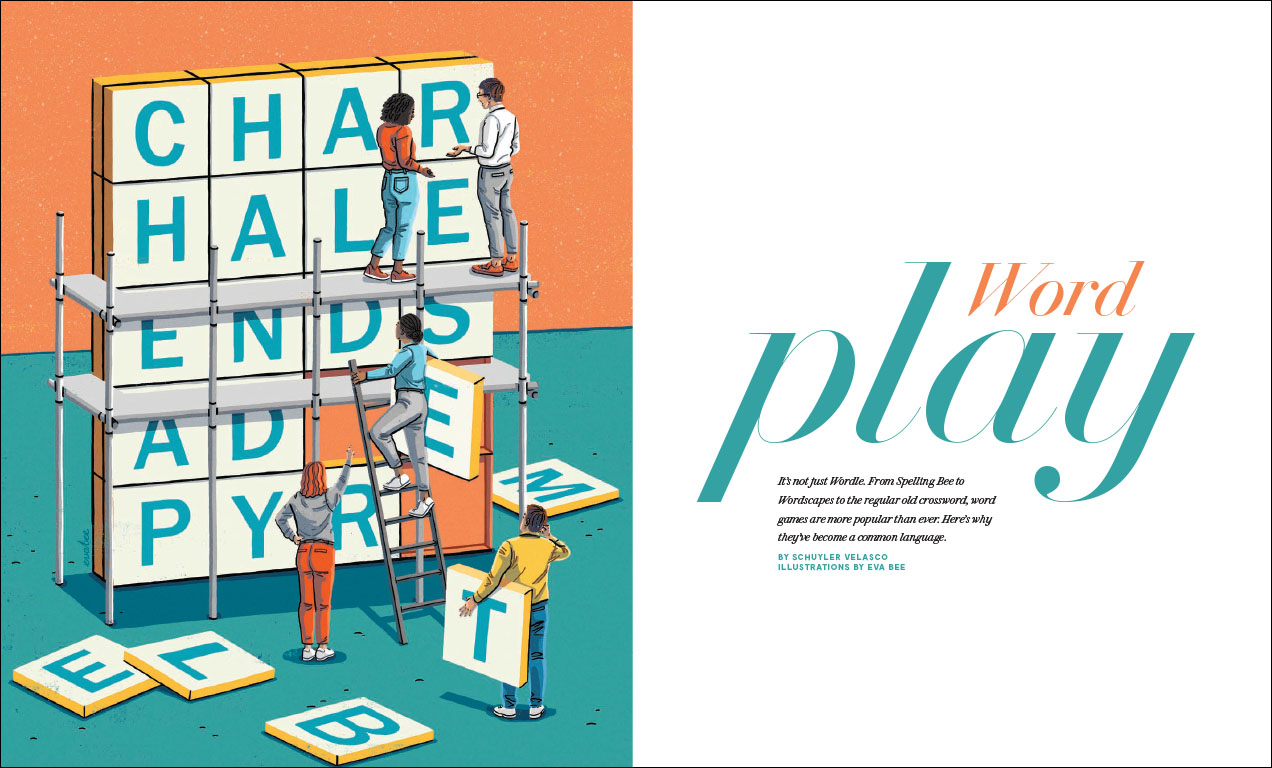
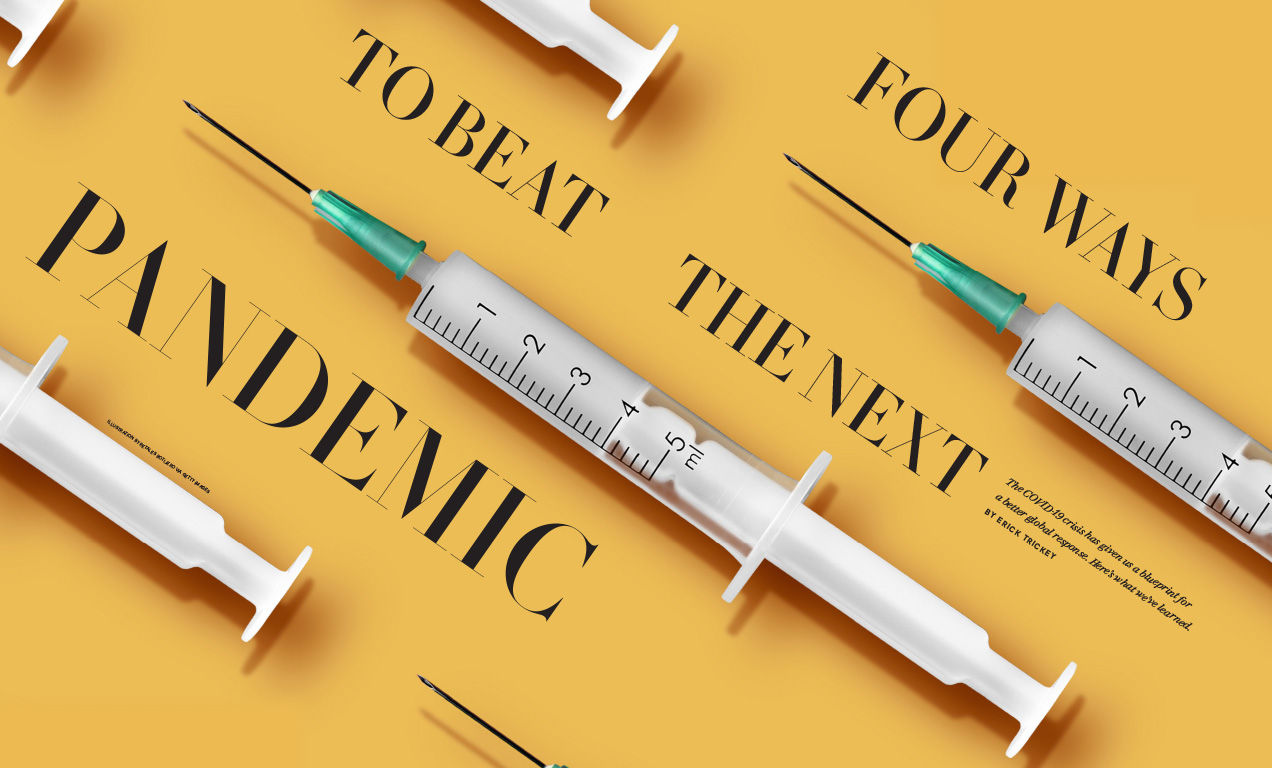
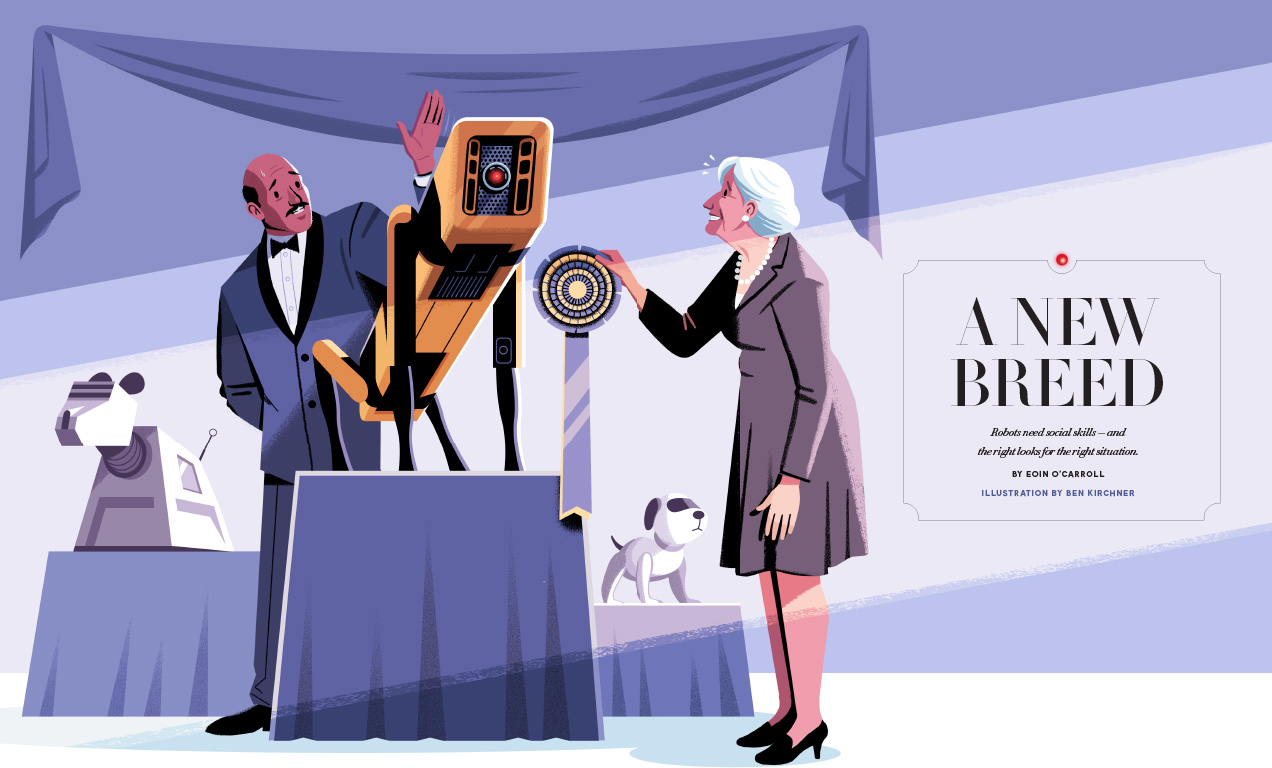
The first print edition weighed in at 70 glossy, beautifully designed pages (plus cover). Weiss says, “We wanted something that, when it comes in the mail, you’re going to pause before you go and toss it in the circular file, because it’s just so big and beautiful. And you want to open it up and see what’s in it.”
Workman is proud of the magazine’s aesthetic, but he says, “The reason for our success, to me, is that we are story first. We’re just trying to find interesting stories to tell out there. When we were imagining it, we thought about the New York Times Magazine, about Vanity Fair, about The New Yorker. Obviously, we’re not on that level, but those are our models.”
The magazine takes a delicate approach to the Northeastern brand, though the university’s experiential philosophy underlies its storytelling. In spring 2022, an expansive cover story about innovation in opera uses a Northeastern music professor as a source, but goes on from there to include experts from other institutions. Summer 2022 examines the study of Adélie penguins and what their numbers reveal about climate change. The first scientist mentioned in the piece is from Stony Brook, though the director of the Northeastern robotics lab shows up in the next spread. This is not the usual approach for most higher-ed publications.
“We’re looking for deeply reported stories,” says Weiss. “We have a few guiding principles: They have a strong narrative component, they have depth, and they’re forward-looking. They’re telling you something surprising and new about the world. And we always want to have a sense of solution. Northeastern is a place that is always working to identify new solutions. We’re not going to do a story that just says, ‘Oh, climate change is coming in, we’re doomed.’ We’re going to show something innovative that somebody is doing to help us get through climate change.”
She adds that it makes sense, as part of a university’s mission, to sponsor that kind of storytelling. “Why should universities be doing journalism? It connects them to the real world,” she says. “And having those stories told by real journalists doing deep reporting gives the work a kind of gravitas. You don’t get that from a piece of collateral that is clearly designed to make you feel like, ‘Oh, doesn’t this look like a great place to go to college?’ Instead, you’re making people think. You’re bringing up issues that aren’t necessarily easy to articulate but are important for people to talk about and think about.”
“People seem to understand what we’re doing,” Workman says, citing a reader who wrote in to say that reading Experience made them proud to be affiliated with Northeastern because “it feels like the university is doing something in the world!”
The print magazine has been a huge success. Working with the advancement department, the Experience team initially identified a large group of potential donors to send it to, and also included all faculty and staff in a mailing list of about 40,000. “The university calls the magazine an ‘artifact of elite status,’” Weiss says. It was so well received that the circulation list was doubled to 80,000. In the post-pandemic publishing economy, who does that?
Northeastern does. “Our boss, the university president, everyone who has a stake in this said, ‘Okay, we know your background, we know your experience. We’ve seen what you can do. Keep doing it,’” says Weiss.
“They just gave us a blank canvas,” says Workman. “And it’s a very rare opportunity to have a completely blank canvas.”
“We still update our online content weekly, and we have a newsletter that goes out to people’s inboxes. But the magazine is different. When it lands in your mailbox, it says you have a special relationship with the institution.”
—Joanna Weiss, editor in Chief, Experience Magazine
Share this article

Catherine O’Neill Grace is senior associate editor of Wellesley magazine at Wellesley College. Full disclosure: She is an alum of Middlebury College and really misses her print magazine.
